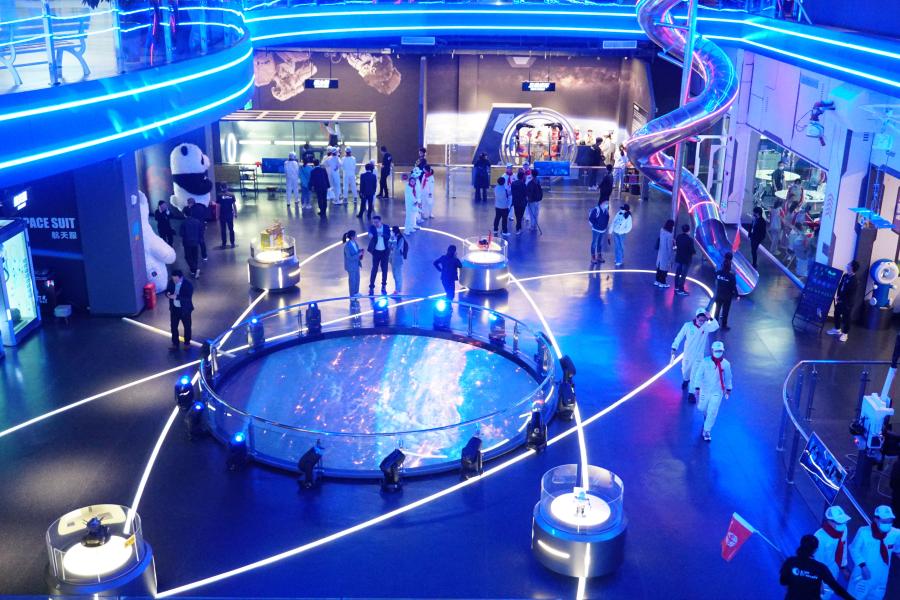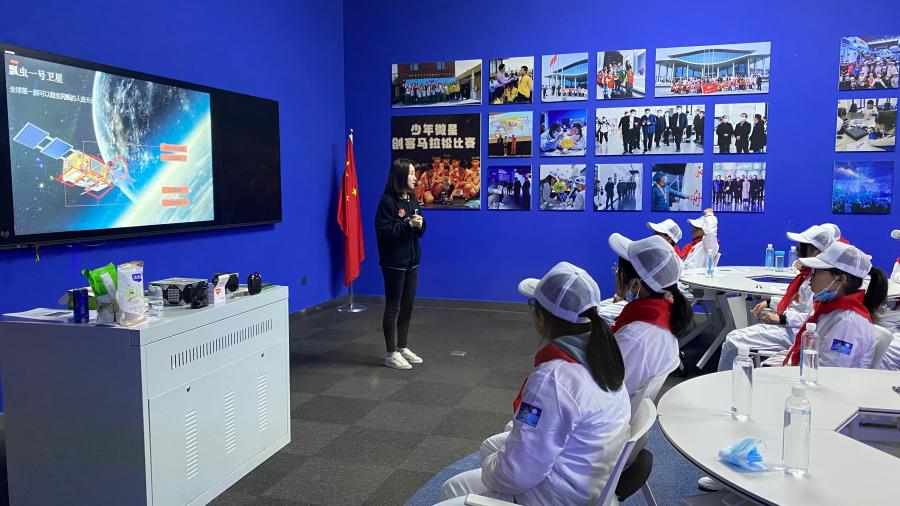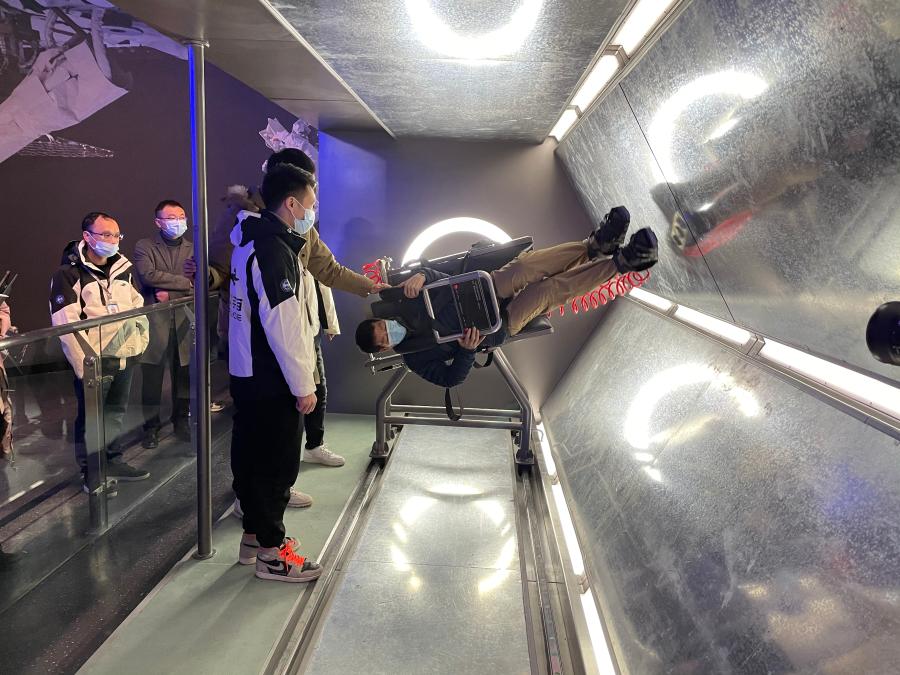Immersive museum opens to promote China's aerospace popularization
2021-04-23 15:21:27 来源: Xinhua 责任编辑: 陈佳丽|
People visit different zones in Space Exploration Center Nine in central China's Hubei Province on April 21, 2021. (Photo provided by Commsat) BEIJING, April 22 (Xinhua) -- An immersive and interactive museum opened to the public recently in central China's Hubei Province to promote aerospace science popularization, ahead of China's sixth Space Day. The opening ceremony of the museum, Space Exploration Center Nine, was held Wednesday as a part of a space science popularization week jointly organized by China National Space Administration (CNSA) news center and the Jingzhou municipal government. At the opening ceremony, CNSA news center director Meng Hua said the great cause of aerospace begins with dreams and advances based on innovation. She hoped the museum could open a door for children to explore and sow the seeds of their love for science. Asia-Pacific Space Cooperation Organization secretary-general Yu Qi said the museum is a new landmark for children's space dreams and hoped it would become a model of popular science education for teenagers in China and the Asia-Pacific region.
A group of students participate in a science class about satellite in Space Exploration Center Nine in central China's Hubei Province on April 21, 2021. (Photo provided by Commsat) Co-founder of Commsat, a private satellite company, Peng Yuanyuan, wished young people can improve their knowledge of space science and technology in this museum, cultivate a systemic and engineering way of thinking, and abilities to face challenges. Located in Songzi, Hubei's Jingzhou City, the museum was developed by Commsat and a local state-owned enterprise. It covers 20,000 square meters and provides more than 40 immersive and interactive activities in five zones of astronaut training, the Moon, Mars, deep space, and cosmic origins. In the museum, visitors can experience the dialogue between space and Earth, receive the flight status information of actual satellites, check data such as orbital altitude and satellite temperature, and design and assemble satellite models.
Zhao Chuandong, one of China's first batch of astronauts, puts on magnetic shoes and tries to walk upside down to simulate walking in a spaceship in Space Exploration Center Nine in central China's Hubei Province on April 21, 2021. (Photo provided by Commsat) Visitors can put on magnetic shoes, walk upside down, and experience how astronauts feel when moving. In the weightless sink, they can carry out underwater weightlessness training like real astronauts. After the opening ceremony, Zhao Chuandong, one of China's first batch of astronauts, gave a science lecture about space exploration. The museum also held an exhibition titled "A Life Story of Qian Xuesen," the pioneer of China's space exploration. In 2016, China set April 24 as the country's Space Day to mark its first satellite launch, "Dongfanghong-1", into space on April 24, 1970. ■ |







